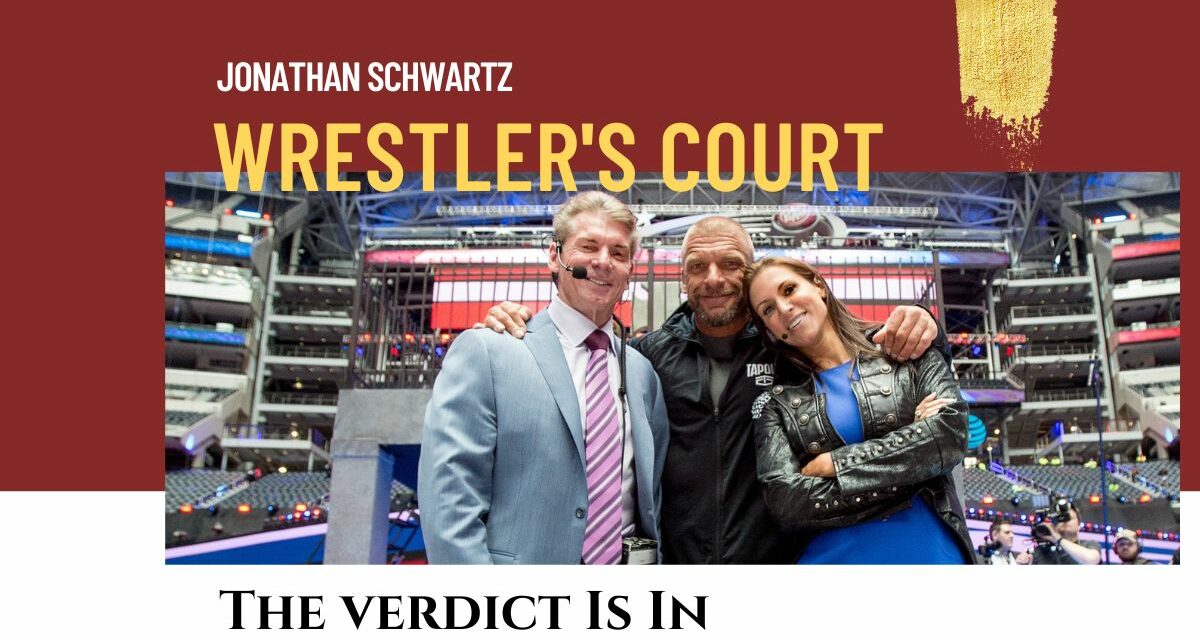If you are a professional wrestling fan you know that no matter what happens, the show must go on. This is particularly true of World Wrestling Entertainment (WWE), which has weathered numerous storms: the 1990s steroid trial; the 9/11 terrorist attacks; the deaths of Owen Hart, Eddie Guerrero and Chris Benoit; and even acts of nature like a volcano eruption and the blizzard of the century.
WWE has also endured (and caused) sex scandals like those involving Mel Phillips, Pat Patterson and Terry Garvin, lawsuits by former talents Sable and Nicole Bass, and a former referee’s talk show allegations. Fans will argue about how well WWE navigated these events, but so far none has borne the implications of the past few months, which have caused Vince McMahon to resign/retire from the company he grew from his father’s and grandfather’s regional promotion.
For context, and since this story is moving fast and without respect for a humble columnist’s deadlines, I write this on Thursday, July 28.
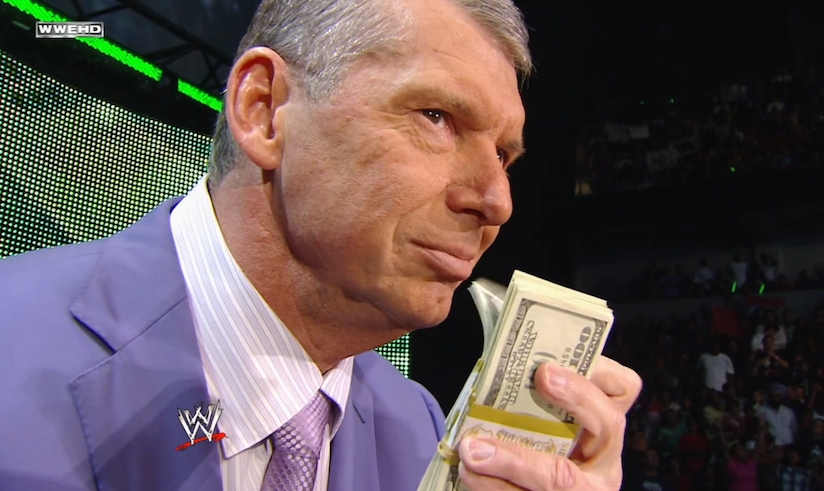
In case you’re new here, Vince McMahon is under investigation by WWE’s Board of Directors (and more recently the US Securities and Exchange Commission and federal prosecutors) over allegations that he paid millions of dollars to former employees and ‘general contractor’ talent in order to keep sexual relationships quiet. If those allegations are true, they paint a dark picture of WWE’s corporate culture and suggest a pattern of discrimination and harassment that go back to WWE’s initial public offering. Before the accountability required of public companies, who knows, although allegations against McMahon go back to at least the mid-1980s.
WWE’s internal investigation was first reported by the Wall Street Journal on June 15, but it covers events that go back to 2005, with more than $14.6 million being paid out:
- 2005-McMahon allegedly coerced a female wrestler into performing a sex act on him. When she refused further encounters she was allegedly demoted and her contract was not renewed.
- 2006-McMahon reached a non-disclosure agreement, including a $1M settlement with a former manager after another sexual relationship.
- 2008- McMahon reached a non-disclosure agreement for another $1M settlement with a WWE contractor. McMahon allegedly sexually harassed and sent her unsolicited nude photos.
- 2012-WWE official John Laurinaitis was accused of misconduct, resulting in a non-disclosure agreement worth $1.5M to an employee who ended an affair with him, resulting in her being demoted. Laurinaitis would be fired, although reasons were not provided.
- 2018-The wrestler from the 2005 case noted above reached a settlement with McMahon worth $7.5M.
- 2019-The paralegal who would become the focus of the current investigation was hired by WWE’s legal department.
- 2021-Laurinaitis was rehired as Head of Talent Relations. The paralegal would be promoted to his assistant.
- April 2021-The paralegal was promoted from Laurinaitis’ assistant to a director position.
- January 2022-The paralegal signed a non-disclosure agreement which prevents her from publicly disparaging Vince McMahon or discussing their relationship.
- March 30-An anonymous person claiming to be the paralegal’s friend emailed WWE’s Board of Directors with information regarding Mr. McMahon’s alleged actions. This includes the allegation that the paralegal’s salary doubled from $100,000 to $200,000 after her relationship with McMahon began, and the claim that McMahon “gave” her to Laurinaitis.
- April-WWE’s Board of Directors began its investigation.
- May 19-Stephanie McMahon announced that she would temporarily step down as WWE’s Chief Brand Officer, stating that she wanted to spend more time with family. Speculation turned to her husband Triple H’s recent health issues, even as he was returning to work following heart surgery.
- June 12, 2022-The Board of Directors received a copy of the $3M agreement between Mr. McMahon and the paralegal from McMahon’s lawyer.
- June 15-The Wall Street Journal reports the Board of Directors’ investigations and the accusations against McMahon and Laurinaitis. The report notes that it is looking into other non-disclosure agreements signed by former female employees alleging misconduct against McMahon and Laurinaitis, and cites an initial finding that McMahon used personal funds to pay the former employees (this would later be challenged).
- June 17-WWE announced that Mr. McMahon had temporarily ‘stepped back’ as CEO and Chairman of WWE during the investigation but would remain with the company as head of Creative. WWE also announced Stephanie McMahon’s return as interim CEO and Chairwoman. Vince would go on to appear on that night’s Friday Night Smackdown and the next few episodes of Monday Night Raw in a series of bizarre, defiant appearances.
- June 20-Laurinaitis was placed on administrative leave pending the results of the internal investigation. Bruce Prichard (who had recently returned from his own exile and rapidly moved up the ranks) was promoted to Interim Head of Talent Relations in addition to his duties overseeing Raw and Smackdown.
- June 21-At least five law firms announced their plans to investigate WWE over potential violations of federal securities laws, engaging in unlawful business practices, breaching fiduciary duties and allegedly harming investors by producing misleading information.
- June 27-Former referee Rita Chatterton, who had accused Mr. McMahon of sexually assaulting her back in 1986 during a 1992 interview, revisited her claims in an interview with New York magazine. Former enhancement talent and current personal injury attorney Leonard Inzitari (better known to wrestling fans as Mario Mancini) was quoted, corroborating her claims. McMahon would appear on Raw that evening to introduce John Cena.
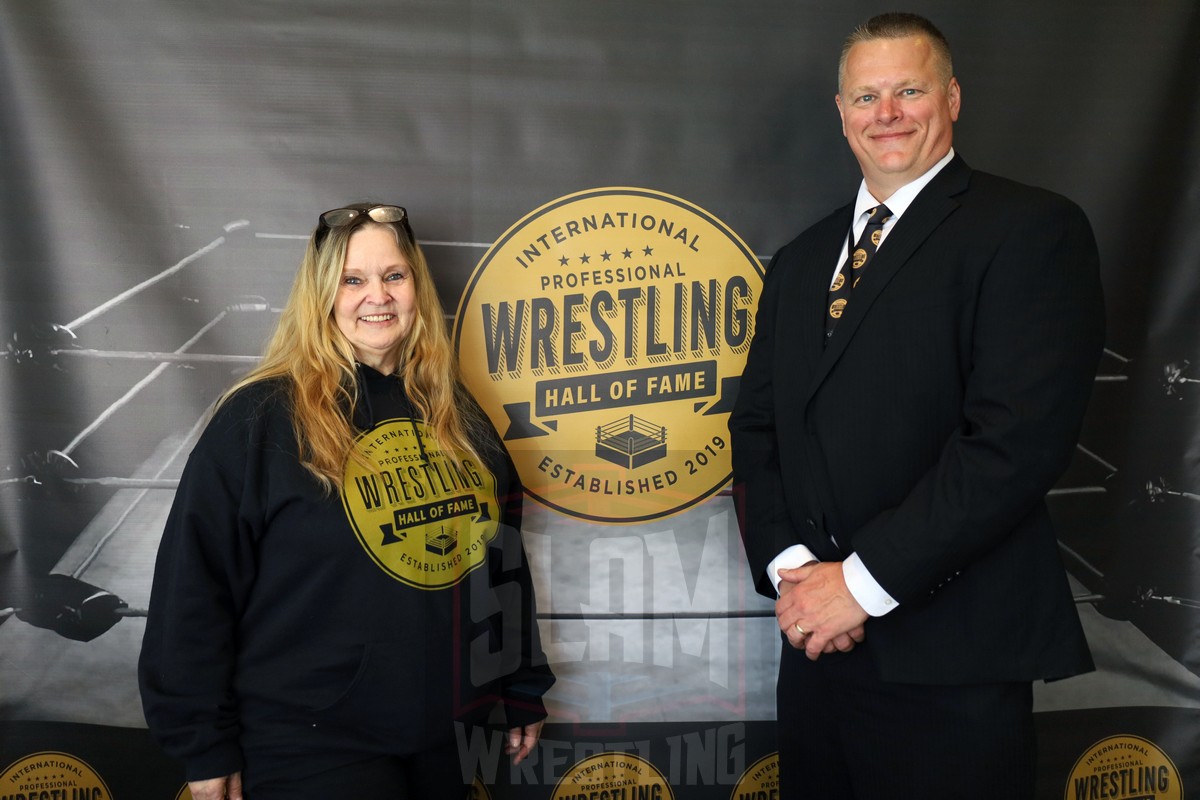
Former WWF referee Rita Chatterton and Seth Turner of the International Pro Wrestling Hall of Fame at The Wrestling Classic 2 presented by Captains Corner and K&S Wrestlefest on Saturday, April 23, 2022, at the Doubletree Hartford in Windsor Locks, CT. Photo by Christine Coons, www.coonsphotography.com
- July 8-The Wall Street Journal followed up on its previous report, providing additional details. The report notes that McMahon had paid at least $12M in non-disclosure settlements to former WWE contractors and personnel.
- July 22-Triple H was announced as Executive Vice President of Talent Relations, replacing Prichard. Vince McMahon later officially announced his retirement on Twitter, saying, “At 77, time for me to retire. Thank you, WWE Universe. Then. Now. Forever. Together.” He has supposedly removed himself from al aspects of WWE operations including their creative process. He still holds more than 80% of voting power within the Board of Directors. He and current CEO and Chair Stephanie McMahon, as well as son-in-law Triple H, control an overwhelming percentage of shares and votes in this nominally public company. Stephanie McMahon and Nick Khan would be named co-CEOs, with the younger McMahon instituted as permanent chairwoman.
- July 25-WWE released its annual report for 2021. The report lists a risk factor specifically regarding the consequences of McMahon’s retirement. A separate SEC filing noted that contrary to earlier claims that McMahon had funded the non-disclosure agreements with his own money, their investigation had discovered $14.6M in unaccounted for funds which McMahon had used personally. The potential consequences of this finding were rumored to have triggered McMahon’s retirement, as they would draw the attention of regulators. New co-CEO Nick Khan openly mused about WWE being sold.
I think it is possible for someone to be more than one thing, especially when they have played such a significant role over so long a period of time as Mr. McMahon.
A lot of what Vince did well had nothing to do with actual “inside the ropes” wrestling and in fact hurt its presentation. Today’s motion sickness inducing camera work and commentary that focuses more on shilling other matches than the action in the ring being two examples. McMahon expertly anticipated trends in media: the rise of cable, syndication, pay per view, streaming services. Vince got in early on all of these. He also modernized aspects of how wrestling is presented (whether he had the idea or lifted it from others): entrance music, pyro, the use of graphics on screen, the endless parade of merchandise, etc. McMahon turned wrestling into big business. And yes, this came with a predatory approach that killed the territories (and for those who preferred McMahon’s more polished product, most of his superstars learned their craft in travelling between territories. WWE has been trying to build stars in a vacuum ever since. It has rarely worked).
I am struck by how focused everyone is on wrestling. This retirement, if you believe it, has nothing to do with wrestling and everything to do with Vince being responsible and directly participating in a culture of harassment and discrimination. WWE is the leader in this media space, and it has now been shown that the organization itself is pretty rotten, starting at the top. Vince’s legacy (and I don’t know why we’re talking in these terms since he is still alive) has less to do with WrestleMania and buyrates than it does with the company he grew, and that it turns out he used as his personal playground along with his cronies. If he did what he is accused of, any other chairman or CEO would have been run out of town ages ago.

Nick Khan
Today, Stephanie McMahon, Nick Khan, and Triple H hold the keys to the proverbial castle, a real life version of the McMahon-Helmsley Era they used to portray on TV. Of course, as a public company their discretion is limited by their duties to act in the best interest of their shareholders and maximize WWE’s profitability… but what does that mean when they, and their now silent partner parent, are the largest shareholders? And what does that mean to ‘serious’ fans, who have long felt artistically unfulfilled by the product WWE is selling?
Rumors continue to swirl about a possible eventual sale, with a consortium led by The Rock (a lifelong friend of Mr. Khan, whose sister acts as Young Rock’s showrunner) being floated as one possibility. As a wrestling fan, it is difficult to see WWE remaining successful without a wrestling insider at the helm, even more difficult to see the now multigenerational success of WWE continues without some degree of McMahon family involvement. WCW provides a cautionary example: the more corporate senior decision-makers became, the more audiences tuned out. Wrestling has always benefitted from a certain kind of carny exceptionalism that belies professionalization. While one hopes that WWE’s new leadership does better, and AEW’s Tony Khan makes for healthy, lasting competition to the benefit of wrestlers and fans alike, even if Vince is banished to Del Boca Vista, he will never truly die.
This change of leadership presents opportunities for wrestling fans. Critics regularly pointed out how in the last years of Vince’s reign WWE booking had become repetitive and stale, with an overreliance on nostalgia acts and nepotism and endless rematches.
Ironically, the same criticisms would have been levelled at the AWA and Jim Crockett Promotions and WCCW during their final days, although those promotions had been bled of resources trying to fight off the then WWF’s national takeover of the pro wrestling scene, and wound up dependent on older, loyal acts that would have been past their prime and too regionally-focused for the WWF’s mass, youth audience.
Recently, reports have emerged that McMahon’s own leadership had become increasingly erratic. His ideas had lost traction with a current audience. His mode of expressing them would be considered offensive to current sensibilities, and his general treatment of those around him created a culture of fear; not a work environment that would bring out the best in the creative minds needed to produce compelling television.
Vince has long held in his mind an idea of who his audience is, and despite Titus O’Neil’s assertion to open the July 18 edition of Raw that WWE is apolitical and a “safe space”, this extends only so far as the politics of WWE’s brain trust, which has lagged on issues including representation of women, racialized groups and members of the LGBTQ2S+ community. WWE emphasizes ‘progressive’ values in heel characters. For example, Daniel Bryan (as he was then known) or CM Punk were fine as good guys when they toned the rhetoric down, but Bryan’s environmentalism and Punk’s straight-edge beliefs became core elements of their characters as heels.
Assuming Vince McMahon has truly “passed the torch” like Andre the Giant did to Hulk Hogan (and not feigned it, as Hogan did with the Ultimate Warrior or The Rock in two Toronto-based WrestleManias) what is next for WWE?
I couldn’t be more proud as a father. Happy #FathersDay to all the fathers out there! pic.twitter.com/SiN7bGEiTo
— Vince McMahon (@VinceMcMahon) June 16, 2019
If WWE wants to chart a positive course forward, here are five broad suggestions to help WWE live up to its slogan “Then. Now. Forever. Together.” For fun’s sake, this list includes ideas for the product itself, as well as thoughts about some pretty clear governance challenges which must be addressed for the sake of the business and its shareholders (including the McMahons themselves).
1. IT’S TIME TO CLEAN HOUSE
WWE’s ongoing internal investigation into $14.6 M in “unrecorded expenses” over the past 16 years and inquiries launched by the US Securities and Exchange Commission and federal prosecutors have turned up the heat on the corporation, as they should. Leaving aside the ethics of McMahon’s and others’ conduct, the allegations suggest a pattern of abuse of power over a period of years. Vince leaving is a start, but not sufficient: in order to establish a pattern of harassment and payment using company funds he had to have created an environment that enabled bad (and possibly, occasionally illegal) behavior. This requires a significant housecleaning.
Already, former Head of Talent Relations John Laurinaitis (who was also implicated in the initial report) has been marginalized, though not yet terminated. It is anticipated that Executive Producer & Chief, Global Television Distribution Kevin Dunn will leave as well. Recently former Senior Director of Talent Relations Mark Carrano was fired for an alleged unrelated pattern of harassment. I have already discussed the cases of Mel Phillips, Terry Garvin and Pat Patterson from the 1980s, so that pre-dates the publicly-traded company. Taken together, these events speak to a pattern of harassment that would be unconscionable in a modern organization (that’s not to say this, and other issues are limited to WWE; they’re societal concerns).
WWE needs to look at its senior management and positions of influence throughout the company, especially in its financial, HR and talent relations ranks (including writing staff and agents) and consider the message that their continued employment may send.
In addition to revamping HR standards, WWE must create, distribute and most importantly enforce a robust workplace discrimination and harassment policy. The policy needs to be strongly worded and set out clear consequences for its violation by anyone in a position of power or influence within the company. Given the stain that the present allegations may leave on the company, it should be disseminated broadly and I would argue made public to help educate fans about how WWE will do better. One of the more problematic parts in following these events has been the reaction of some truly ignorant members of the audience, for whom consent and power imbalances and appropriate workplace relationship appear to be foreign concepts. I have read way too many comments from creeps who see Vince as blameless, or worse, taken advantage of by women who would sleep with him for his money. The fact that these views are in the wrestling community at all is repugnant. WWE did not originate these viewpoints, but they have contributed to them. Let WWE help fix this problem, too.
If WWE fails to take these steps it is difficult to escape the presumption that so far as daily working life goes, the new boss isn’t all that different from the old boss.
2. END THE CULTURE OF CRONYISM
Tying into my first point, WWE and professional wrestling in general is known for its closed-door approach to executive decision-making. The same names often appear to circulate between those promotions that are big enough to afford them. This lends itself to a lack of transparency internally and externally and runs counter to principles of good governance.
A culture of cronyism means that sooner or later the same few names are fired and rehired. Pat Patterson, Jim Ross, John Laurinaitis and Bruce Prichard have all had multiple stints in executive roles with WWE. As they work their way up they tend to surround themselves with their own people, whom they believe they can trust. Wrestlers who maintain a positive relationship with these senior decision-makers come to wield a degree of power over their own colleagues and may be viewed with mistrust.
It is an unhealthy work environment that privileges connections over merit and can and has give rise to allegations of abuse of power. It is destabilizing since senior management under Vince McMahon often meant one was hired to be fired and demoralizing since allegations could be levelled against those individuals (like Patterson and Laurinaitis) resulting in their removal, only for them to return to more senior positions once public pressure died down. One can appreciate the need to prove allegations of misconduct, and this is an area where corporations and society as a whole have a lot of work to do, but appearance counts as well. Equally important, management needs to resist the temptation to overload these positions with their own friends.
3. EMBRACE DIVERSITY AT ALL LEVELS
One longstanding criticism of WWE has been its failure to reflect its audience in the ring and behind the scenes, a position that is increasingly out of step with audiences’ expectations. The biggest star in wrestling history identifies as Samoan and Black, yet WWE has always been slow to capitalize on opportunities to highlight diverse performers. WWE has made periodic efforts to increase representation among its writers, but key decisions were still often made by the same few voices, including some with dodgy personal records on matters of race.
Vince McMahon has long been open about his personal regard for civil rights hero Dr. Martin Luther King Jr. but wrestling, including WWE has long had a fraught history when it comes to marginalized groups — openly acknowledged by many including New Day members in a recent podcast. Between McMahon’s read of his audience, the prevalence of traditional offensive tropes and the pressure imposed by an entertainment form that paints in very broad strokes, it is difficult for even the most exceptional talents to break through to the kind of mass recognition they deserve. To be fair, things seem to be getting better on this front. Featuring performers like Roman Reigns, the Mysterios, Kofi Kingston, Bobby Lashley, Big E and Bianca Belair in main roles helps, but for every Big E there’s too many cases like Apollo Crews exaggerating a Nigerian accent and marching to the ring with a spear. Naming Titus O’Neil as a brand ambassador was a good move; saddling him with Hulk Hogan in a WrestleMania appearance in a bid to rehabilitate the latter’s image after racist remarks caught on tape alienated Hogan from a generation of fans was not. Darren Young and Sonya DeVille were free to identify themselves on their own terms, but will likely never receive the heroes’ welcome that was accorded the Ultimate Warrior, despite the latter’s hateful homophobic remarks.
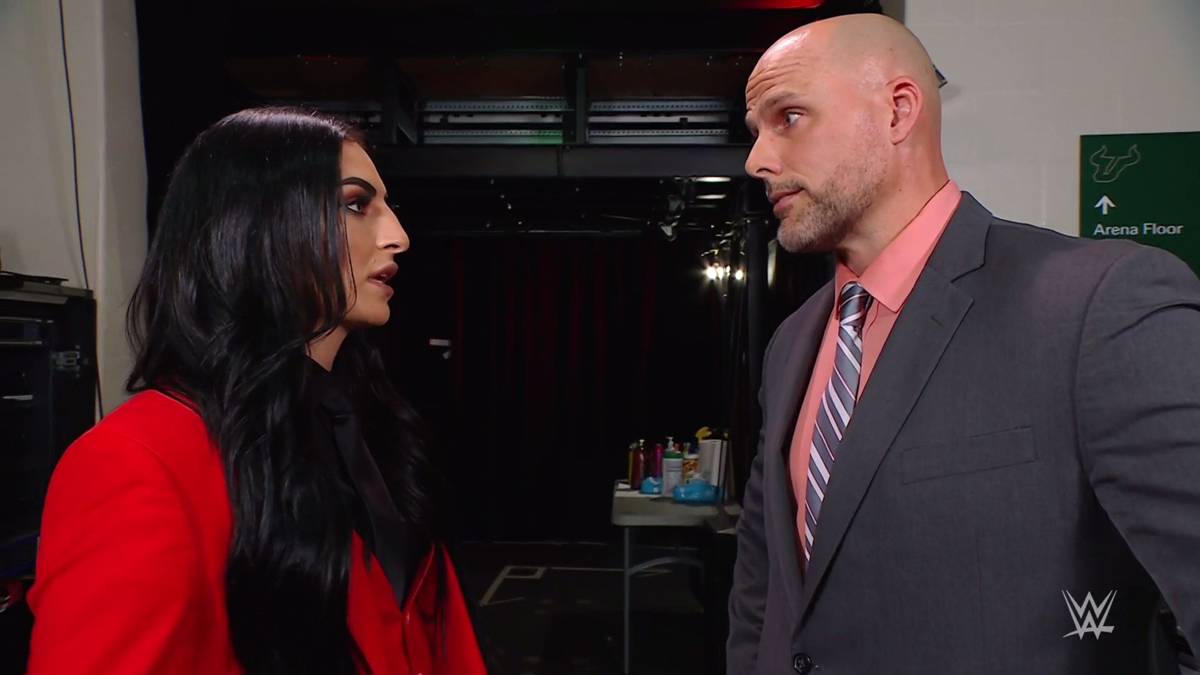
Sonya DeVille and Adam Pearce.
One can hope that Stephanie McMahon’s rise to the proverbial corner suite bodes particularly well for women’s wrestling. Stephanie has long championed female talent and pushed for increased television time and an all-women’s pay-per-view. Hopefully this comes with continued development of serious characters and great, main-event worthy matches. A strong women’s division is especially important going forward. Vince faces allegations that he preyed on female talent for decades. A strong, independent women’s division, backed up by fair and respectful treatment backstage send a powerful message to shareholders and fans. WWE can’t send that message by sending its’ stars to compete in bra-and-panties matches, or by differentiating them solely by hair color.
4. LEARN HOW TO COMMUNICATE IN A CRISIS
I started by writing about some of the crises that WWE has faced over the years, some externally driven and some of the company’s own making. In speaking with a friend who works in Government Relations we were most struck by how poorly WWE handled each of these crises in turn. Under Vince McMahon, WWE has been seen to be combative and more interested in denying any wrongdoing than in showing a commitment to truth and improving themselves; even to the extent of threatening interviewers (see Bob Costas) or lying about matters that are easily disproved (Hulk Hogan on The Arsenio Hall Show). In the wake of Chris Benoit’s murder-suicide, WWE trotted out representatives like Mr. Kennedy, who denied that steroids were still an issue in modern wrestling. Kennedy would be caught out with performance-enhancing drugs a short time late.
It’s almost as though despite killing kayfabe in an effort to save money on athletic commission licenses decades ago, McMahon seeks to bring it back when dealing with legitimate media. Under his watch he could always assert “business as usual.” That may be the best way to read Titus O’Neil’s recent odd cold open on Raw a few weeks ago. O’Neil claimed he had reached the pinnacle of his success in his current role as WWE Global Ambassador. He pointed out the need for goodwill all over the world, and how people in WWE seek to put smiles on peoples’ faces in and outside the ring; helping those less fortunate and supporting US troops. Significantly, he said that’s why we will never hear WWE talk about politics, or religion, or any other subject matter that’s decisive. Titus then said regardless of race, economic status or nationality, this is a place where people deserve to have a safe haven, this is a place where WWE wants to simply make sure we all have a good time. It felt like a proxy plea from McMahon, begging us not to pay attention to the man behind the curtain.
I am concerned that this may be a hard lesson to learn, especially without Vince’s charisma. On the first show after Vince announced his retirement, Stephanie opened the broadcast by shushing fans who had broken out into a spontaneous “thank you Vince” chant (itself an odd choice given the circumstances, but it originated with the fans), and then trying to cheerlead one of her own.
If this is WWE’s best effort at crisis communications, they need help. Proper crisis communication is the strategy and execution of communication between an entity (like WWE) and stakeholders like shareholders and fans, before, during and after a negative event. Managing crises, especially for a corporation that invites them by virtue of its public role, is proactive and requires constant attention to materials, messages and means of distribution to limit confusion, outrage or panic whenever a crisis occurs. It is key to preserving an entity’s reputation. In speaking with my friend, it was clear that if WWE has a crisis communication function or outsources it to a specialist firm, whoever is doing that work has a difficult client who, to date is unwilling to listen to even basic best practices. As EC3 might say, WWE needs to learn how to control the narrative.
5. REDESIGN, REBUILD, RECLAIM
Apart from necessary corporate and operational changes, Vince McMahon’s retirement presents an opportunity for a creative refresh. For fans, this may be real test of any cultural shift. Some, like CM Punk, are deeply skeptical that things will change; but given WWE’s recent focus on goodwill (see my earlier remarks re: Titus), there are a few things WWE can easily do on the creative side to show us that it is going in the right direction. These include:
- Let NXT die: The brand was at its best with Triple H holding the reins. Once he was removed from its operations and marginalized in his own executive role, Vince and Prichard turned it into NXT 2.0, which has yet to decide whether it is meant to be a standalone brand or a true developmental system. The truth is, it is neither. NXT grew out of the lack of territories and independent promotions to provide a feeder system for WWE talent, and a desire to mold athletes from other disciplines into WWE style performers. With increased (admittedly consolidating) competition from the likes of AEW, NJPW and Impact and a resurgent indy scene, and WWE’s own lack of respect for successful characters and continuity coming out of NXT, that brand has run its course.
- Compete, don’t kill: It’s an old saw that Vince killed the territories and set about destroying any entity that dared to compete against the WWF as it expanded nationally. Vince would deny this, especially when it came to WCW. While he sought to win the Monday Night Wars and increase his market share he always denied putting WCW out of business; it suffocated under the weight of mismanagement and poor decisions. Competition is good for wrestling in all its forms. Since the territory days, it has allowed talent to work and evolve and thrive; picking up new personae and testing them in front of varied audiences, or just finding a home where an act that doesn’t get over in one place is warmly received somewhere else. Keith Lee and Karrion Kross are two recent examples who drew interest everywhere they went except under Vince’s jaundiced eye. They were swiftly repackaged, jobbed out and forgotten. Both acts deserved better, and in a thriving competitive scene may yet have a chance to be the heroes (and villains) their audiences demand. Whether they reach their potential in WWE, AEW or elsewhere, a more competitive wrestling scene means there’s something for every fan, and long-term gives us all a chance to expand our horizons. A thriving indy scene also gives younger talent the chance to get vital reps in before they make the jump to larger and diverse live audiences. WWE has enough work to do in order to improve its own product. The sheer number of ways that fans can now access different wrestling content means that even if audiences are fragmented, it should be possible for multiple promotions to find a lane and grow a fan base. WWE needs to let this happen. The creative doldrums of post-WCW life suggest it is vital to their long-term success.
- Make amends: One of the hallmarks of the Vince McMahon era was a seemingly arbitrary approach to talent relations. Wrestlers could find themselves blackballed from WWE for perceived minor offences, while others who said and did more serious things would be repeatedly welcomed back into the fold. Former champions could wink in and out of history, while the most loyal, unquestioning in ring lieutenants’ legends grew. Thus we have years where champions like Bret Hart or Hulk Hogan or Bruno Sammartino could be erased, while Shawn Michaels and The Undertaker be paraded as “the best ever”, and perverse examples where Michaels is lauded despite significant bad behavior backstage, including recent bullying allegations wherein he mocked a mental health issue raised by a member of FTR, and Hogan is cut out because he signed with a rival promotion but pushed before jeering audiences after his racist rant surfaced. Understanding the fictional aspects of the WWE universe, developing a fair, consistent approach that lets all talent understand where they stand and how they can objectively maximize their time in WWE would be good. Even better, the example set by welcoming some long-excluded acts into the Hall of Fame — including those kept out by their participation in a failed, ill-advised concussion lawsuit a few years back like Demolition and Ivan Koloff. In Koloff’s case, it’s too late for him to attend in person, but if Gil Hodges can finally make the National Baseball Hall of Fame, WWE can find a better way to recognize the talent on which the McMahon family built its empire.
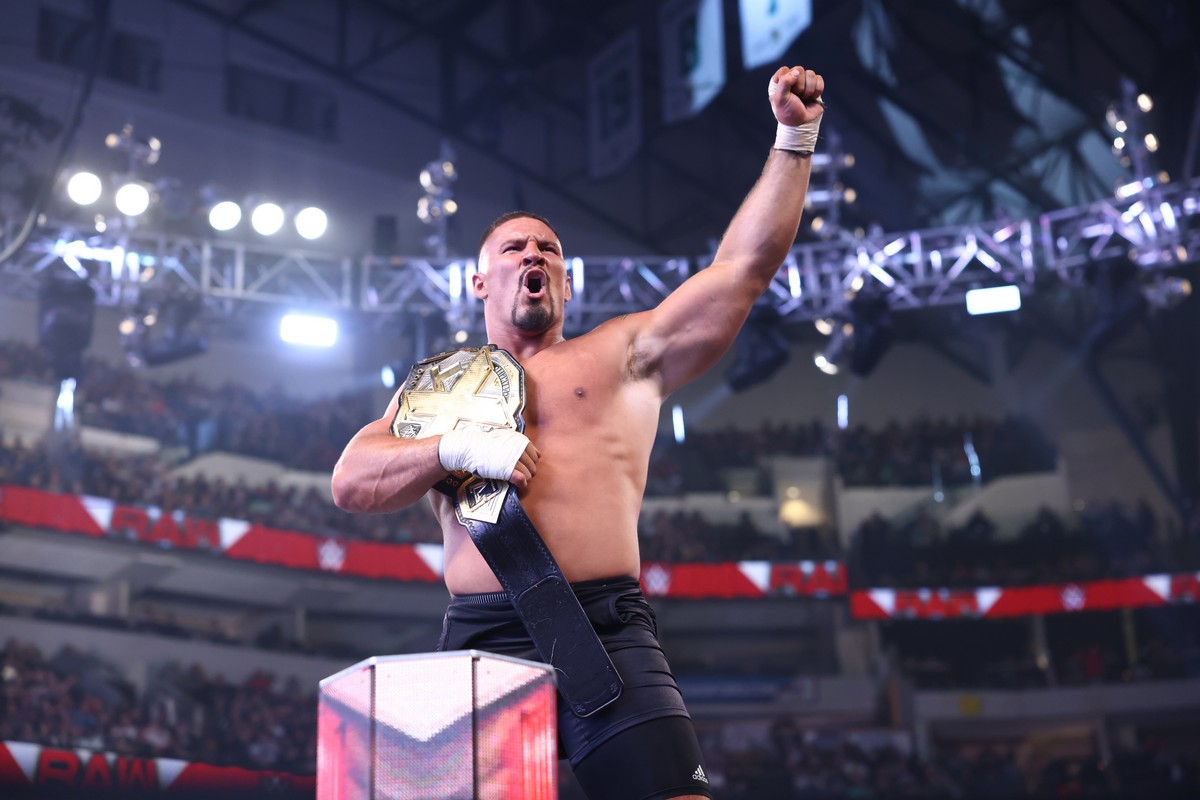
Bron Breakker at Monday Night Raw at the American Airlines Center in Dallas, TX, on April 4, 2022. WWE photo
- Start a youth movement: While WWE moves away from the NXT model, it has a chance to build its next round of superstars. Wrestlers like the Creed Brothers, Von Wagner and Bron Breakker are still raw and require more work to be WrestleMania-ready, but they’re close and placed thoughtfully, can develop quickly. Fans acknowledge that the main event has grown stale, relying heavily on older like Goldberg, Brock Lesnar, Edge and John Cena. While I am a fan of each of these men, their continued involvement at the top of the card provides diminishing returns, especially when in order to keep them relevant, younger talent is continually sacrificed. Every so often, wrestling needs to renew itself and the best succession plans in-ring (or apparently outside of it) can still lead to a period of disorientation. While Roman Reigns has blossomed into a successful long-term heel champion, at some point he will have to turn good — the crowd already seems to be pushing him that way — and will have to drop his title to someone else. While wrestlers can perform athletically much later in life than other athletes, at some point the audience needs to move on. Edge, Cena, Randy Orton and AJ Styles (and Punk and Bryan in AEW) are my cohort. I am by no means ready for retirement — I’ll leave that to Vince, for now, but I do understand that long-term planning around talent past a certain point is not viable. There’s a reason why baseball teams rarely sign older pitchers to big money contracts… and successful franchises are able to bring up a steady stream of new talent to keep a team competitive. In wrestling terms this means using the names I’ve mentioned, along with stars like Dolph Ziggler and The Miz, to help get the newer names I mentioned and others, over. And for God’s sake, please don’t book The Rock vs. Reigns for WrestleMania.
- Do Business Differently: For all of my focus on the produce we fans see, it is vital that WWE change the way it handles its talent. The circumstances of Vince’s departure come with a price: WWE is squarely in the sights of legal and regulatory bodies. Once these inquiries start it is unlikely they will stop, as more business practices are uncovered. Earlier, I mentioned the “carny exceptionalism” which has granted wrestling in general and WWE in particular, a surprising degree of license over how it handles its business. Perhaps this is in part due to assumptions made about pro wrestling’s audience. Maybe it reflects wrestling’s ongoing efforts to shapeshift between entertainment and sport, to shimmy around one set of rules or another. In any case, it is possible like McMahon himself, WWE has run out of rope. If you look at many of the calamities discussed earlier, a common theme is the lack of protection that is offered to wrestlers. It leaves these athletes vulnerable and has led to a host of bad outcomes. The most effective form of crisis management is to avoid the crisis in the first place, and to be seen doing so in a transparent and fair manner. This is part of what Triple H has promised in taking over creative. The challenge is to really turn WWE into a positive place to work, more needs to be done to look after the people who make it great. Whether this means a shift to collective bargaining model, opening a discussion about whether membership in existing athletic or entertainment unions is viable, or some other approach, the key will be for WWE to be seen to take some kind of steps voluntarily, before lawsuits and investigations call the question.
Vince McMahon’s retirement may be the best angle in wrestling history. Time will tell whether WWE emerges from it a stronger, more positive place, or whether it was a carny ride all along.
TOP PHOTO: Vince McMahon, Triple H and Stephanie McMahon at WrestleMania. Twitter photo
RELATED LINKS
